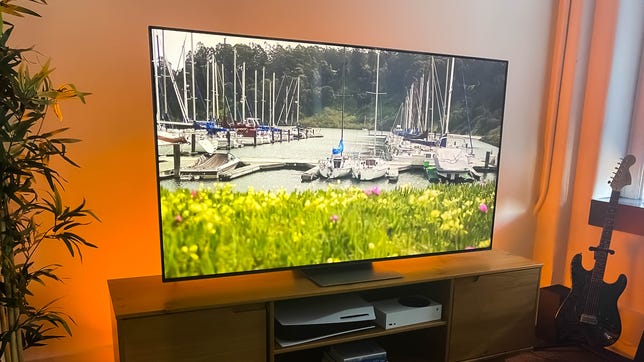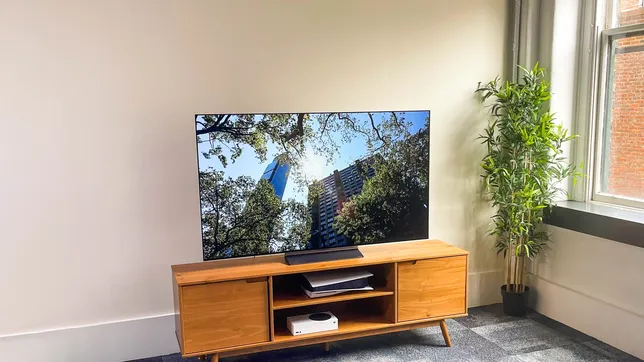With all of the new models and information at CES 2023, the future of TV technology is promising. Among the incredible technology we saw were huge OLED panels and entirely wireless sets. Although the exact release date of these innovations is unknown, they will undoubtedly be costly.
Fortunately, there are several high-quality TVs that are being offered at affordable costs. This is due to the fact that the best TV sales cycle through the autumn and into the winter when retailers reduce prices and TV manufacturers battle for your money. What TVs are the best, though? To pick the best TV for you, from expensive OLED and QLED models to low-cost LCD TVs and everything in between, use our list, which compares TVs we’ve tested side by side.
TCL 6-Series Roku TV

The TCL 6-Series, commonly known as the R655 series, has been our favourite affordable TV for the past five years, and the 2022 model is no different. Mini-LED technology and well-executed full-array local dimming make this TV outperform nearly every other TV at this price point in terms of image quality. The new 85-inch size has normal legs, but the R635 series is enhanced with better gaming accessories and a redesigned center-mount stand that can be raised to accommodate a soundbar. Finally, our top pick for an operating system is Roku TV.
It should be noted that several 6-Series models, in addition to the R635, which this TV replaces, were introduced in 2021 and are still available. The R646 series has comparable specs to the R655 devices examined here, however it runs on the Google TV operating system. The R648 series is substantially more costly and boasts 8K resolution.
The prices shown below are for the 65-inch size.
LG OLED C2

The C2 offers the highest level of picture quality at a price that is, although expensive, not outlandish. With its flawless black levels, unmatched contrast, and excellent off-angle viewing, it surpasses every non-OLED TV on our list, including the Samsung QN90B below. Additionally, it offers excellent gaming capabilities that make it the ideal mate for an Xbox Series X or S, PlayStation 5, or both. The C2 is also available in a range of sizes, however the larger variants are more costly.
The 65-inch model we examined weights about 37 pounds with its stand, compared to 72 pounds for the 65-inch C1; improvements over the C1 from the previous year include further changes to game mode and a new “always ready” function. Carbon-fiber construction allows for up to 47% less weight.
The prices shown below are for the 65-inch size.
TCL 4-Series

In our test of cheap TVs, the TCL 4-Series Roku TV’s image quality lagged the Vizio V-Series, but the variations between the two are so minute that you’d have to compare them side by side to tell any difference at all. The Vizio provides Dolby Vision, Bluetooth, and AMD FreeSync with a variable refresh rate, all of which are absent from the 4-Series.
The superb Roku Smart TV system is incorporated into the 4-Series, giving it an edge over the Vizio. It is therefore a fantastic option for anyone seeking a complete smart TV solution without the need to add an additional streaming device.
The prices shown below are for the 50-inch size.


 In our side-by-side assessment of mid-priced devices, we somewhat preferred the TCL 6-Series, but this Hisense is a solid competitor. Best-in-class brightness, which enhances picture quality in bright environments and makes HDR TV movies, programmes, and games really shine, is the foundation of its exceptional image quality. Although it is brighter and has higher contrast than the TCL, the TCL ultimately won out because of its slightly more realistic image. In contrast to the TCL, the Hisense utilises Google TV instead of Roku, and the U8H has an ATSC 3.0 tuner. Actually, any one is a good choice.
In our side-by-side assessment of mid-priced devices, we somewhat preferred the TCL 6-Series, but this Hisense is a solid competitor. Best-in-class brightness, which enhances picture quality in bright environments and makes HDR TV movies, programmes, and games really shine, is the foundation of its exceptional image quality. Although it is brighter and has higher contrast than the TCL, the TCL ultimately won out because of its slightly more realistic image. In contrast to the TCL, the Hisense utilises Google TV instead of Roku, and the U8H has an ATSC 3.0 tuner. Actually, any one is a good choice.


Comments are closed.